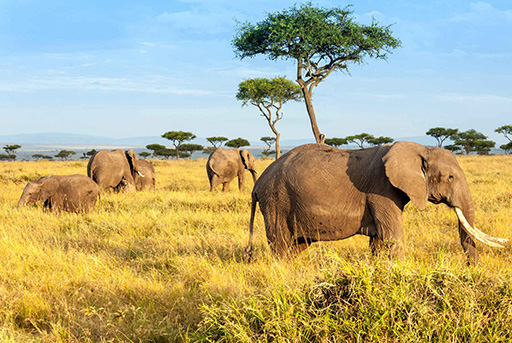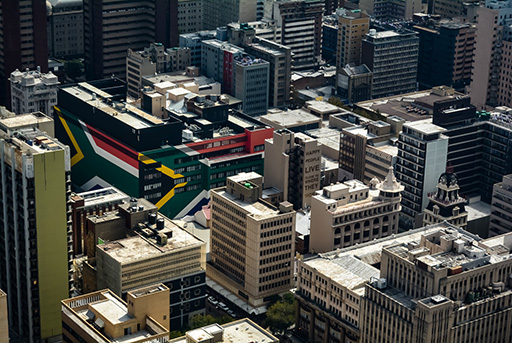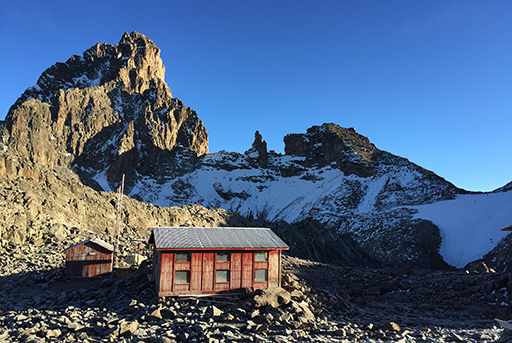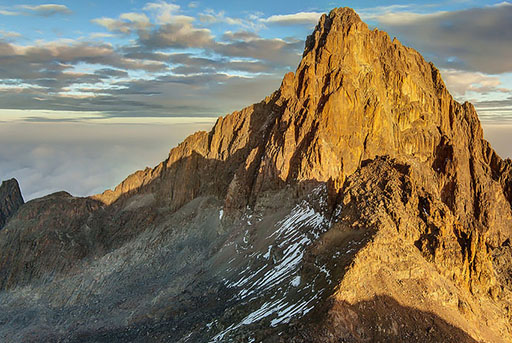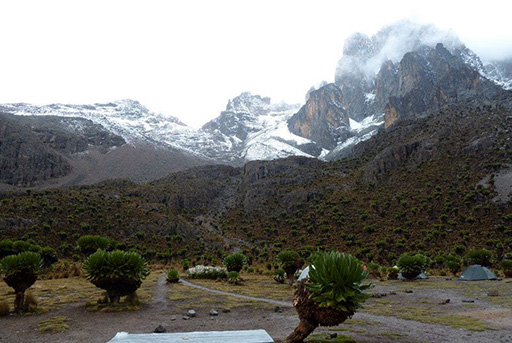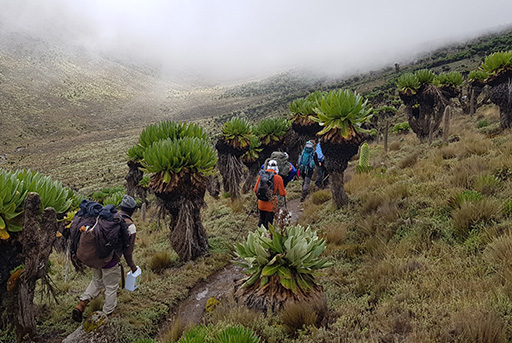Trekking Equipment
Trekking Equipment

Although some of the trekking, clothing, footwear and camping equipment are available on hire, it is always advisable to bring as much of your own right fitting equipment because you may at times miss some items that fit you perfectly. Personal and miscellaneous items must be brought along by the clients as it is difficult to get most items around the mountain region. The following should be put into account:
Footwear: Make sure that your boots and socks are the right size to ensure comfortable hiking and reduce chances of injuries during the hike. Lower altitude treks require training shoes with good support. High altitude requires medium-weight boots - leather or synthetic to counteract chances of frostbite. A pair of training shoes my be handy for changing in the Camp. Woolen or synthetic socks are recommended in high mountain. More than one pair of socks help in the harsh conditions and offer cushion to the feet. Several pairs are essential for changing into.
Clothing: Several thin layers of clothing are appropriate than few thick layers. All materials can be used, but should offer wicking and breath ability to wick moisture away and keep you dry and warm.
Jackets: The outside layer of clothing; anorak, parkas, cogonales, coats etc, recommended for extra layer of warmth for dawn summit attempt. The types could be; "body warmers" or "Duvet jackets" which are light, water proof and fairly small to carry. The middle-layer between jacket and underwear. Cotton sweatshirts are not suitable, they get wet when you perspire and take long to dry. Fleece sweatshirts are suitable and right type.
Trousers: Light-weight, breeze proof types are recommended for hiking. On high altitude, padded trousers keep the body warm. On harsh conditions, extra clothing under trekking trouser helps to warm the body. In warm conditions shorts are ideal. Underwear: Insulating and wicking fabric(thermal) that keeps the moisture away from the skin are ideal. In warm conditions, cotton T-shirts and undies are appropriate. T- shirts and undershorts are good for hiking, while long sleeved vests and long john’s are suitable for cold evenings.
Hats and gloves: High altitude areas have unpredictable hot and cold weathers. A sun hat that covers the back of the neck is essential but a scarf can do. On cold day, balaclavas that rolled up are ideal for retention of heat, especially synthetic materials. Gloves should have a layer system (Thermal gloves) to cope with strong winds and rain.
Hiking Gears

Rucksack: For carrying essential personal items. The size should be big with side bags for keeping extra luggage. Light weight and waterproof is ideal and convertible travel ones are convenient for combining trek with general travelling. If travelling with porters, a separate back bag is required for carrying essential gears.
Sleeping bag: Good layering and flexibility is required in any sleeping bag to cope with range of conditions. The commonly used ones are; down bags, lighter, smaller when compacted and durable; synthetic bags, cheaper and warm even when wet. In any high altitude, a ‘four season’ bag is desirable.
Water bottle: These could be flexible water bag holding large volume for extra water on long or hot day. Carrying of water is recommended for replenishing the lost water through perspiration to avoid dehydration.
Water purification: One fitted with water filter and/or a supply of purification tablets/solution for sterilizing drinking water.
Torch/Flashlight: Head-mounted torch is appropriate than hand held type for this leaves the hands free to do other things. Spare batteries and bulbs are recommended as they are affected by cold conditions.
Personal equipment: Sunglasses and snow goggles: These cut the intense glare on high mountains. The snow goggles with side flaps are useful for summit attempt from lower slopes of glaciers.
Safari Planning
Planning and Packing for your Safari to Africa

It is often said that Africa is cold with hot sun, as the blend of high altitudes and tropical sun make for a unique and variable climate. This should be kept in mind when packing for a visit. Both temperatures and climate vary drastically from region to region and even throughout a single day. Basically the traveler should come prepared for hot, cold, wet and dusty conditions.
Packing for a trip to Kenya, Tanzania and Botswana requires some careful thought and consideration. Ultimately your packing should be dictated by the activities you are planning to undertake.
If you are travelling extensively throughout Africa make sure that you bring suitable luggage. Suitcases and bags should be able to withstand plenty of handling and dusty conditions. Hard suitcases are ideal, but can take up a lot of space.
If you are travelling by domestic/chartered flights, remember that there are luggage restrictions, particularly on smaller aircraft. Check in advance with your Charter airline or Safari/Tour operator.
For those planning a lot of travel by road transport or trekkers, a backpack is advisable. Bring a sturdy, well constructed pack with lockable zips and catches.
A small daypack is ideal for carrying cameras, travel documents and basic everyday items.
Equal consideration should be paid to what you bring with you.
Casual, lightweight, and comfortable clothing is usually the best. For walking safaris or game viewing, clothing should be of neutral color, and white, bright or vividly patterned clothing avoided. Studies have proven that most African game animals are able to see bright blue over any other color.
Strong footwear is advisable if you are planning to do any walking. For serious climbers and trekkers a good pair of hiking boots should be brought with you.
Remember that the tropical/Equatorial sun is strong and burns quickly. Wide brimmed hats are preferable to baseball caps for sun protection. Both sunglasses and a good quality sunscreen (rated SPF15 or higher) should be used.
A good quality insect repellent is worth bringing.
In some areas, mostly coastal, it is considered inappropriate for women (and in some cases men) to wear shorts or short sleeved shirts. It is always best to seek local advice.
For some up-market lodges and nights out you may wish to bring some more formal evening wear.
You should bring your own Toiletries with you. Basic toiletry items are widely available.
Any personal Prescription drugs should be brought if necessary. Also bring the generic names for these drugs in case they need to be replaced locally. If you have prescription glasses it is wise to bring a spare pair.
For those planning lengthy treks or camping expeditions, a basic medical kit is also a good idea. A small Flashlight/Torch and a Swiss Army knife are good accessories to carry.
If you have a video camera battery charger or an other electrical items, bring your own converter plug set if needed (the electricity supply is 220 Volt, 50 Hz with a square pin 13 amp plug).
A good quality pair of Binoculars are essential for effective game viewing.
Climbers can hire equipment, ropes and gear in Kenya, but it is advisable to bring their own personal kit and equipment.
Divers will find excellent dive gear for hire in Kenya, but may also wish to bring their own regulators or dive computers. Those with prescription masks should definitely bring them along. Dive Certification Cards and log documents should be brought along.
All travel documentation should be kept together securely. This should include tickets, Passports (with appropriate visa entries), Vaccination Certificates, and Travel Insurance documents.
Additional photocopies of Passport, Air ticket and Traveler's Cheque numbers should be brought and packed separately.
Safari Accomodation
Igloo Type Tents
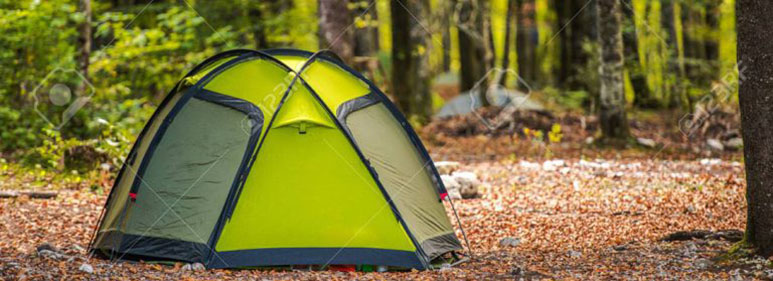
We use two person dome waterproof tents with fully fitted ground sheets and sewn-in mosquito nets. We also provide thick comfy mattresses and so all you need to bring is your sleeping bag.
Private Camping Safaris
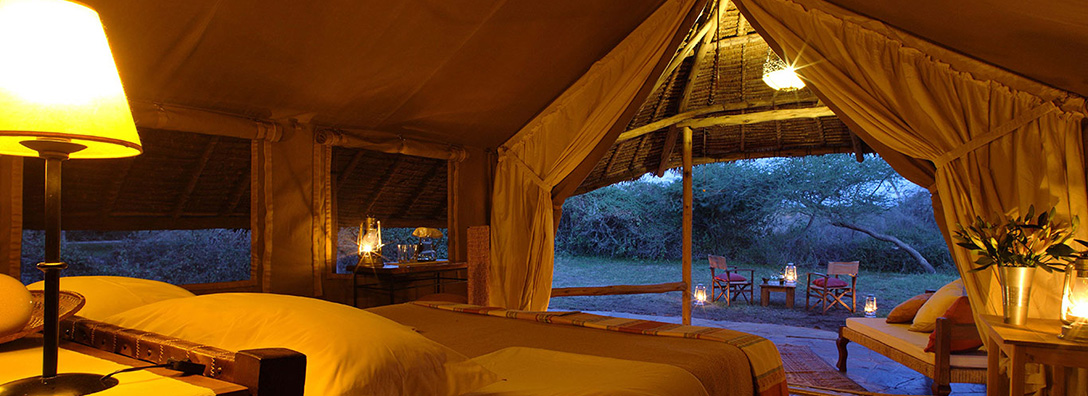
Private Camping Safaris in Africa are extremely efficient and well organized. Your private camp are erected in a game-rich wilderness area; tents are large and luxurious with simple but adequate ensuite facilities; staff are sent ahead to attend to your every need and prepare your camp accommodation.
Tented Lodges
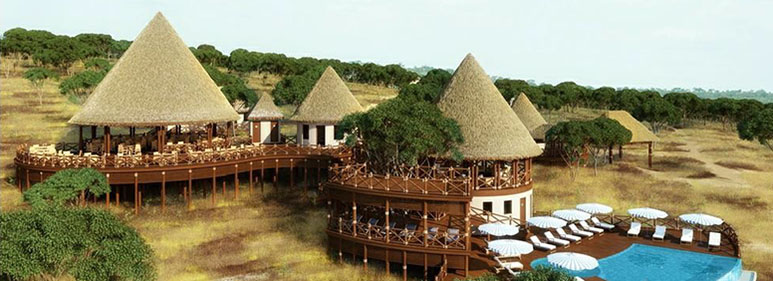
Similar to lodges in the number of guests they can accommodate, tented lodges consist of permanently pitched tents. They give you a chance to sleep under canvas but are equipped with ensuite toilets and hot showers.
Tented Camps

Smaller than lodges and tented lodges, tented camps are usually privately managed and intimate, with the emphasis on service and attention to detail. Furnished beautifully and built into the surroundings their simplicity and style make tented camps some of the most expensive safari residences in Africa.
Safari Lodges
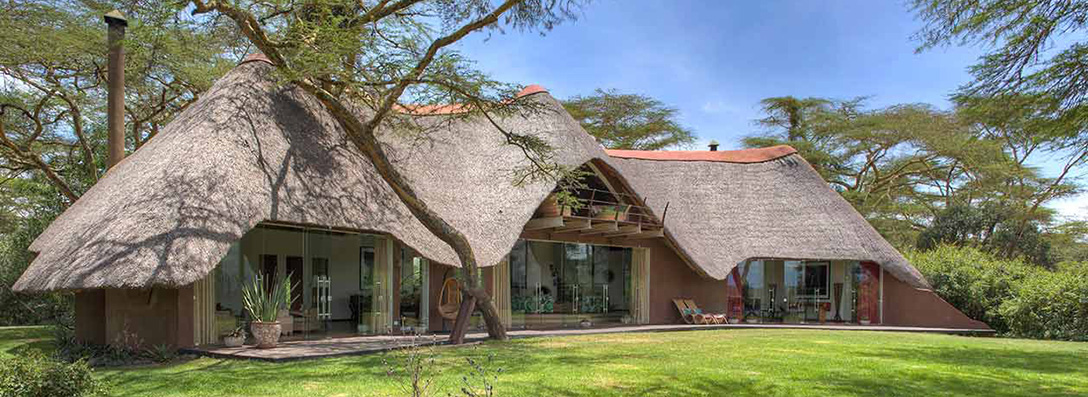
African lodges are usually imaginatively designed and mostly built of 'bricks and mortar'. They are structured and can accommodate a large number of people. This type of safari accommodation is often found in remote locations and provides you with the creature comforts you'd expect from a hotel.
Hotels
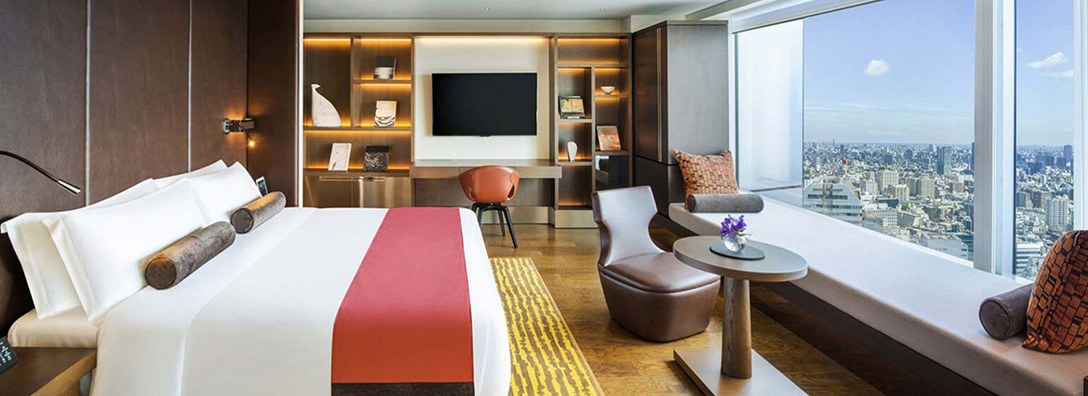
Africa has some well established and famous hotels which provide you with all the services and facilities that you require. This type of accommodation is often equipped with business centers so that you can keep in touch with family and friends before and after your safari.
Mount Kenya
Trekking in Mount Kenya has attracted many adventure travelers since the early 19th century. The most hilarious attempt was that made by the Italian prisoners of war who attempted to climb the mountain with a map inscribed on a tin, showing the major twin peaks. Unfortunately they didn¹t make to the top due to hunger.Mt. Kenya National Park is located to the east of the Great Rift Valley, about 175km North-East of Nairobi. The ecosystem lies in Central and Eastern provinces of Kenya. At 5,199m the mountain is the second highest peak in Africa. UNESCO inscribed Mount Kenya as a World Heritage Site. Its described as one of the most impressive landscapes in Eastern Africa.
The Mountain’s original name was “Kirinyaga” from a Kikuyu word meaning a place with Ostrich. Legend has it that the Mountain’s original name was derived from the comparison of the patched peaks resemblance with the black and white plumage of a male Ostrich. The Kikuyu believed that this area of admirable beauty was their god’s domain. It was due to this spiritual belief that they regarded the Mountain as a sacred place. It was also in this same perception that the Kikuyu glorified their god (“Ngai”) as “Mwene Nyaga” implying that they recognized him as the owner of the holy mountain. It was customary to build huts with the doors facing the direction of the mountain so as to face the mountain first thing every morning. As a religious belief, they faced the mountain when praying and offering sacrifice to their god. Visits to the mountain were only made as a pilgrimage to offer special sacrifice to their god, otherwise it was a taboo.
What is it like to Hike Mount Kenya?

Mount Kenya is the only snowcap mountain that straddles the equator. Your visit will be fulfilled by a various kind of attractions. As your target is to hike and explore the afro-mountain habitats, Mt. Kenya will enrich your outdoor knowledge and leave you with a desire to know much about the wilderness. The mountain is regarded as being among the most beautiful volcanic mountain with eye catching undulating and awe-inspiring sceneries. The lush forests pristine with diverse biota the gigantic peaks, picturesque valleys and crystal clear streams.
You should not underestimate Mt. Kenya or other Mountains. Hiking in high places normally yields different effects on individual body physiology. Though related feelings and body reactions are common, specific aspects are expected depending on the altitude and the level of ascend or descend. With the conquer of the summit, the feeling of satisfaction is enhanced and the desire to reach back home to tell the tale of the mountain gets momentum, but it is counteracted by inclined terrain that poses uncomfortable descend. The exhilarating and challenging hike in freezing wilderness and the limited comfort in tents and in huts linger in the memories of every individuals, but are always made charming and adventurous by the thought of the scenic features and the successful conquer of the summit.
The Weather and Climate

The prevailing weather condition usually changes abruptly from clear weather to fogs, snows and mists which are characteristics of all tropical mountains. Though this is the daily trend, the climatically changes are more pronounced in rainy seasons between March-June and October and mid-December. These drastic changes in weather and altitude difference have profound effects on vegetation types and distribution. For instance, on the slopes of the mountain are giant rain forest trees and bamboo forests. As the altitude increases, a reduction in species size and diversity are witness till up the peak where no life exists, except in sheltered parts.
Flora and Fauna

Traversing the various routes provides a closer view of the wide range of flora and fauna; the endemic, diverse and luxurious plant species well distributed up the mountain that add elegance to the Mountain. Alongside these distinctive diversity is an impressive array of forest species of mammals.
Mt. Kenya treks are safe, but preparations must be made to ensure safety. Epics are easier to prevent than to extricate oneself from. A little planning could save yourself and others being involved in unnecessary dangerous situations. There are no absolute medical contra-indications to climbing to high altitude, except for certain cardiac and pulmonary diseases for which affected persons should consult a physician. Good conditioning will allow the climber to enjoy his/her trek at high altitude without being totally fatigued. Major disciplines regarded as mountain norms like;
Acclimatizing adequately: Few mountains in the world give such quick access to high altitude as Mt. Kenya. Fitness is no help; indeed it can even be a handicap, as the fittest tend to push on ignoring the first symptom until they get a very bad dose. A sensible approach to acclimatization can help a great deal. For visitors to the country, it is wise to visit the mountain after spending some time in some of the higher parts of Kenya and not direct from the sea level. A day spent exploring the forest or the heath zone around 1900-2500m can make a big difference as well as being worthwhile in its own kind. A walk around the camp for as long as you can helps also increase the level of acclimatization.
Eating right: The greatest dietary requirements at high altitude is energy intake. A diet high in carbohydrates and supplemented with other foods of high calorific value such as fruits will best prepare the body for the challenging afro-alpine environment. Menus therefore should be meticulously organized with great emphasis on energy content and digestibility at different altitude.
Dressing Right: Be sure you have the appropriate gear for the duration of the trip. Garments of wool and insulated synthetic fibers are highly recommended. Avoid cotton and nylon if you can. If hiking with porter(s), be sure to keep adequate gear in your backpack so that you have what you need, should you become separated during the hike.
Drinking Right: The combined action of strong muscular exertion and strong winds predisposes a hiker to dehydration. It is of utmost importance to replace the lost fluids. To avoid dehydration, your fluid intake should be an average 2-3 liters a day so as to be on the safe side. The following symptoms are the signs for a person suffering from dehydration: - Reduced urine output, puffy skin, production of dark orange urine, reduced mental orientation and headache.
Observing Proper Hiking Habits

The basic rules to be observed by any hiker are:-
- Have all the basic requirements for your day’s hike in your day pack e.g. drinking water, extra warm and water prove clothing, first aid kit, snacks etc. for easy access to them whenever you need.
- Do not force yourself on the strenuous hike if your body feels weak. A wise man will obey his body language.
- Give your body as much rest as possible on the eve of your predawn summit attempt. By the same token increase your fluid intake.
- Do not hurry while on trek. Take your time. Slow but steady pace is preferable, as you don¹t have to stop frequently.
- Drink as frequently as possible as this helps to replenish fluids lost through sweating.
- Advise your guide to stop in case you need rest. Avoid long rest stops.
- Inform your guide about any strange feelings or problems as soon as they occur. This will aid quick action in case of an emergency.
Technical Climbing

The prime attraction for rock climbers and mountaineers are the twin peaks of Nelion (5188) and Batian (5199 m). Below these peaks are a complexity of fields of scree and ice, ridges, walls and couloirs, which offer high standard technical rock and ice routes of about 640 to 1190m in length at an altitude of more than 4420m above sea level. Although accurate grading is impossible due to variable seasonal and meteorological conditions, climbs are graded according to the technical difficulties they pose. About half of the climbs are Alpine Grade V and IV. Under Prime conditions, some of the routes are easier while under bad conditions, a route may be a grade or more harder. There are two major technical rock and ice climbing routes on Mt. Kenya; the North face standard route of Batian and the Normal South East face of Nelion route.
(i) North face standard route of Batian.
This route starts from Kami Hut taking the path leading to the trekkers Summit (Pt. Lenana.) The climbing season for this route is July to September when it takes approximately 10 hours to climb the 1,100 m of a technically grade IV slope. Possible to use it during other months but due to the heavy snow and wet conditions it is harder, Grade V( 5.8 American). It has been done solo for many times but when out of season, though still possible, it calls for more use of crampons and ice hammer especially for those climbers intending to go across the gates of mist¹ route. Care should be taken especially when crossing the Lewis glacier and scrambling to the base. The route has some distinct climbing ropes, which have been left as route markers.
(ii) South East Face Nelion Route: It is most commonly used between January to March when it is designated as grade IV. It starts from Austrian Hut, up Point Nelion across the Diamond couloir and the gates of Mist¹ to Point Batian. It takes 6 hours to climb the 700 m. On the way to Nelion you bypass Howell Hut.
(ii) Ice routes:
Most commonly used ice routes on Mt. Kenya are Diamond Couloir and the Ice Window. The two climbs are approached from the American Camp and Two Tarn hut respectively. Most climbers prefer to bivouac at the base of the Darwin glacier. Their best season to climb is June to October but the weather pattern has been so unpredictable of late and hence predicting the best season for climbing isn¹t accurate. Climbers are advised to contact the Mountain Club of Kenya for an update on conditions.
Camping safari
Sleeping Under Canvas
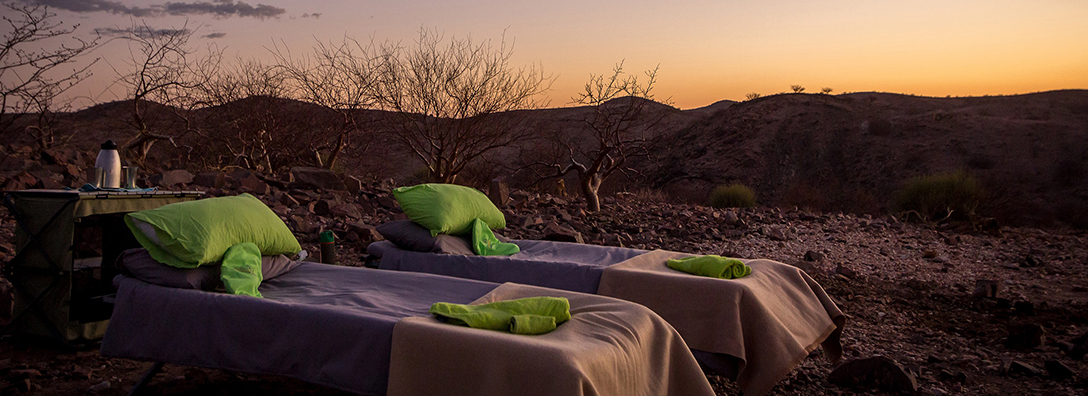
There is nothing quite like sleeping under the African skies on the floor of the Great Rift Valley or camping in the thick African savannah. We use two person dome waterproof tents with fully fitted ground sheets and sewn-in mosquito nets. We also provide thick comfy mattresses and so all you need to bring is your sleeping bag! Camping In Africa adds an unforgettable dimension to your holiday.
There are times you will have the luxury of a real bed, as some of our adventurer safaris utilize lodges or Tented Camps, but for most part on a camping Safari you will be camping. Some of the camps we use are in National Parks and have facilities like Showers and flush toilets.
Other camps are basic, for example our bush camps, the beauty of this being that you will find yourself getting up close and personal with Africa.
Camping Safaris allows you to go to places where few other travelers have been before. It allows you to meet authentic tribes and view incredible landscapes. We avoid busy campsites preferring wilder bush surroundings from where we can stroll peacefully whilst appreciating the scents and sounds of the spectacular African scenery. Our standard camps are lightweight.
To enable us to reach most places. Camping does not have to mean 'roughing it'. Remember that camping, like game walking, is a means of accessing these wilderness areas, and with high quality food and equipment, camping in a scenically magic location is a truly memorable experience.
Meals
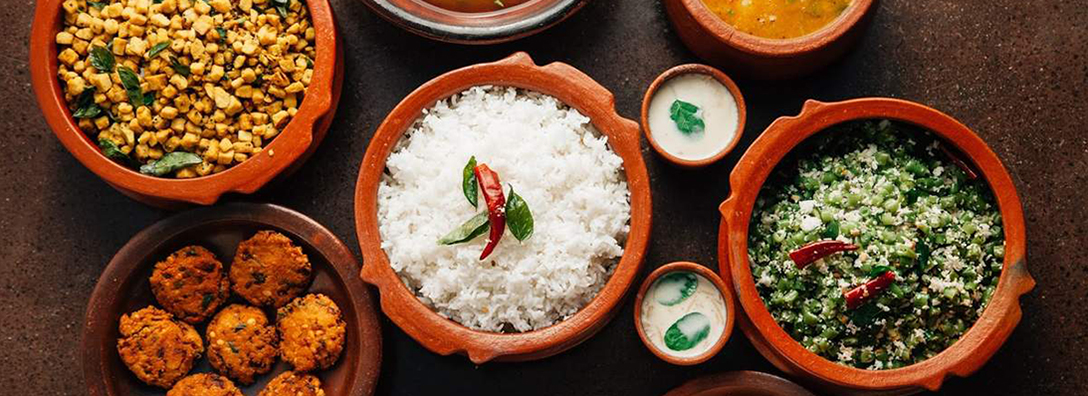
Great food is crucial to any travel experience. The standard of meals at Adventure Holidays is high standard, with emphasis being on good wholesome cooking. You will have fresh foods and vegetables along the way, and of course sample the local specialties of different tribes. Our cooks prepare the meals. To safeguard everyone’s health on tour, our crew ensures that excellent hygienic standards are maintained. If you have any special dietary requirements, your Adventure Holidays cook will do their best to accommodate you. Much of our cooking is done on the open fire but we also have gas stoves for convenience.
Vehicles
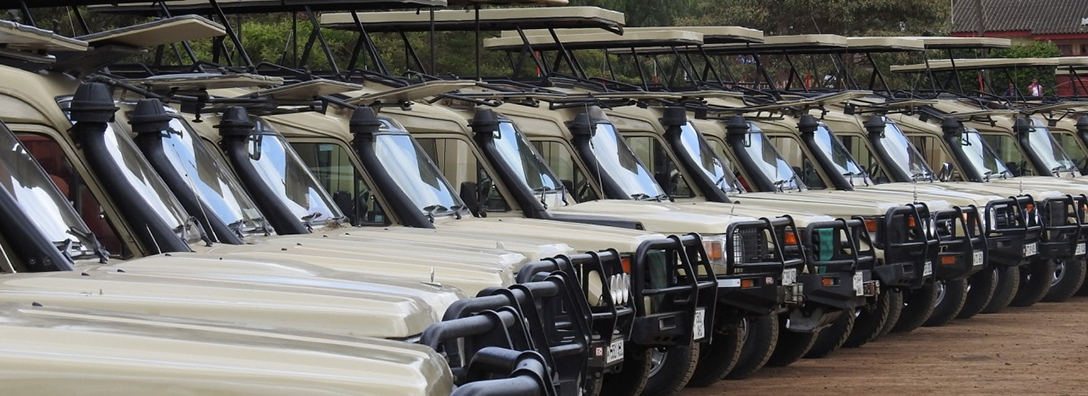
Your comfort and safety is our first priority. Our fleet of Purpose built adventure vehicles are renown for their mechanical excellence, durability and safety. They are designed and built to the highest specification with enough leg-room and hatched roof for game viewing.
Mountain Treks
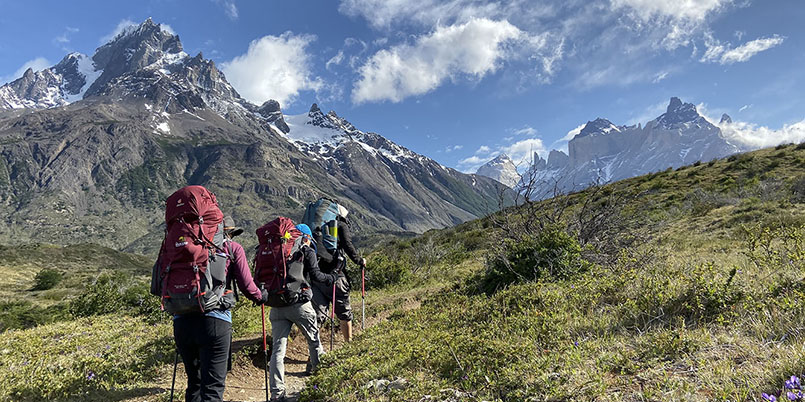
Mountain treks are safe, but preparations must be made to ensure safety. There are no absolute medical contra-indications to climbing to high altitude, except for certain cardiac and pulmonary diseases for which affected persons should consult a physician. Good conditioning will allow the climber to enjoy his/her trek at high altitude without being totally fatigued. Major disciplines regarded as mountain norms include;
Acclimatizing adequately:
Fitness is no help; indeed it can even be a handicap, as the fittest tend to push on ignoring the first symptom until they get a very bad dose. A sensible approach to acclimatization can help a great deal. A day spent exploring the forest or the heath zone around 1900-2500m can make a big difference as well as being worthwhile in its own kind. A walk around the camp for as long as you can helps also increase the level of acclimatization.
Eating right:
The greatest dietary requirements at high altitude is energy intake. A diet high in carbohydrates and supplemented with other foods of high calorific value such as fruits will best prepare the body for the challenging afro-alpine environment. Menus therefore should be meticulously organized with great emphasis on energy content and digestibility at different altitude.
Dressing Right:
Be sure you have the appropriate gear for the duration of the trip. Garments of wool and insulated synthetic fibers are highly recommended. Avoid cotton and nylon if you can. If hiking with porter(s), be sure to keep adequate gear in your backpack so that you have what you need, should you become separated during the hike.
Drinking Right:
The combined action of strong muscular exertion and strong winds predisposes a hiker to dehydration. It is of utmost importance to replace the lost fluids. To avoid dehydration, your fluid intake should be an average 2-3 liters a day so as to be on the safe side. The following symptoms are the signs for a person suffering from dehydration: – Reduced urine output, puffy skin, production of dark orange urine, reduced mental orientation and headache.
Observing Proper Hiking Habits:
The basic rules to be observed by any hiker are:-
* Have all the basic requirements for your day’s hike in your day pack e.g. drinking water, extra warm and water prove clothing, first aid kit, snacks etc. for easy access to them whenever you need. Do not force yourself on the strenuous hike if your body feels weak. A wise man will obey his body language.
FAQs
Can you arrange a trip for persons located outside the United States?
Yes, we have an international clientele. We can make all arrangements in Africa including transportation, accommodation and activities. However, we can only arrange international flights originating in the United States and Europe.
When is the best time to go on a safari?
It really depends on the type of animal you wish to see. Certain reserves have good game viewing all year round but others will have particularly good elephant sightings or other migratory animals at different times of the year. It is generally felt that the African winter (June - August) is the best time to go on safari, as the grass is dry and vegetation sparse making game viewing easier. It is also the time when animals are on the move looking for food and water. In Kenya and Tanzania, you have the memorable opportunity of witnessing the migration of over two million animals.
Temperatures in winter are generally mild but can become considerably cooler in the evening, so pack multiple layers of clothing to ensure you stay comfortable on afternoon game drives and walks. It goes without saying that the standard safari gear must include a broad brim hat, sunscreen and mosquito repellent. In areas where malaria is prevalent, summer is generally a more risky time to travel. So, before you go on safari, consult your doctor for the necessary anti-malaria medication.
Botswana: All year round. Best birding: Nov-March. Best botanical months: Dec-May. Peak season: July-October. Middle season: May-June. Kenya: All year round. Great Migration: June-September. Namibia: All year round. Best birding: summer (Nov-April). Best botanical months: Dec-May. Peak season: July-October. Middle season: May-June. South Africa: All year round. Best game viewing (in north): winter (May-August). Southern regions: summer destination (Sept-April). Tanzania: All year round. Best climbing Mount Kilimanjaro: Aug-Oct and Jan-March. Great migration: April-June and Oct-Dec. Uganda: All year round. Day temperatures range between 77° and 95° F. January is the hottest month. In general there are two main rainy seasons: March - May and October - November. Zambia: Many lodges are closed Nov-May. Victoria Falls spectacular after rains: April-May. Zimbabwe: All year round. Best white-water rafting: Aug-Dec. Best botanical months: Dec-May. Peak season: July-Oct. Middle season: May-June.
What are the special attractions of the countries you operate in?
Botswana: Central Kalahari Game Reserve, Chobe National Park, Moremi Game Reserve & Okavango Region, Makgadikgadi Pans Game Reserve.
Kenya: Aberdare National Park, Amboseli National Park, Masai Mara National Reserve, Samburu National Reserve, Meru National Park, Tsavo National Park, The Rift Valley Lakes, Mombasa, Malindi, south and north coast.
Namibia: Namib-Naukluft Park, Skeleton Coast, Etosha National Park, Kaokoveld, Fish River Canyon, Damaraland and Caprivi Strip.
South Africa: Mpumalanga region (Kruger National Park), Pilgrim's Rest, Blyde River Canyon, KwaZulu-Natal (Drakensberg Mountains, Durban), Western Cape (Cape Town, Peninsula, Winelands, Garden Route) and Sun City.
Tanzania: Great Migration, Serengeti National Park, Ngorongoro Conservation Area, Lake Manyara National Park, Arusha National Park, Mikumi National Park, Ruaha National Park, Tarangire National Park, Kilimanjaro National Park and Selous Game Reserve.
Uganda: Gorilla treks in Bwindi National Park, Murchinson Falls, Nile River, Kibale National Park, Ruwenzori Mountains, and Queen Elizabeth National Park.
Zambia: Livingstone Town, Victoria Falls, Lake Kariba, Liuwa Plain National Park, Lower Zambezi National Park, Kafue National Park, South Luangwa National Park. Zimbabwe: Victoria Falls, Lake Kariba, Zambezi Valley & Mana Pools, Gonarezhou National Park, Save River Conservancy, Chimanimani, Hwange National Park, Eastern Highlands, Great Zimbabwe and Matobo Hills National Park.
Is Africa a good family destination?
Africa offers outstanding value for families. However, some destinations and establishments cater more fully for the enjoyment of children than others. In Kenya, children five years old and younger are generally not allowed on game drives in the parks and reserves. Travel to Tanzania is not recommended for children younger than eight years old. In Botswana and Zambia many lodges do not take children under 12 years. Most lodges have swimming pools and baby-sitting services. Please contact us for more specific information.
How do I get to Africa?
Africa can be reached by regular international flights to its major cites. South African Airways flies direct daily to Johannesburg, South Africa from Atlanta and New York. To reach East Africa from the US, you will have to fly through Europe and then to Nairobi on a European airline (e.g., British Airways, KLM, Sabena, etc.). African Horizons can arrange international flights to Africa that originate in the United States or Europe. We can also arrange flights within Africa. Trains and self-drive are convenient options for travel within Southern Africa.
What are the entry requirements?
All visitors are required to carry a passport that is valid for six months beyond the intended length of stay. Nationals of certain countries do not require visas - this depends on the country you are visiting. It is advisable to check with the Consulate of the country that you intend visiting for the latest visa and entry requirements. The list below contains the current visa requirements applicable to most North American and European countries.
Botswana: A visa is not required for tourists. Kenya: A visa is required and costs $50. The visa can be obtained through a Kenya embassy in advance of your trip or upon arrival at the airport. Namibia: A visa is not required for tourists.
South Africa: A visa is not required for tourists.
Tanzania: A visa is required and costs $50. The visa must be obtained in advance of your trip unless you live in a country that does not have a Tanzania embassy. Uganda: A visa is required and costs $50. The visa should be obtained through a Uganda embassy in advance of your trip.
Zambia: A visa is required and costs $40. The visa can be obtained at the airport and borders.
Zimbabwe: A visa is required and costs $30. The visa can be obtained at the airport and borders.
What types of accommodation are available?
The accommodation type in Africa varies from hotels and inns to luxury lodges, B&Bs and tented camps.
Botswana: Advanced bookings recommended. Lodges and safari camps range from tented sites to permanently tented camps, to reed or brick chalets. Campsites at national parks are very basic.
Kenya: Advanced bookings recommended. Most safari lodges have rondavel or banda type accommodations, with a lounge, central dining and bar in single unit hotels. Tented accommodations vary from super deluxe to standard tents.
Namibia: Advanced bookings recommended outside of major cities. Lodges and safari camps tend to be on private ranches and offer luxurious standards. Campsites in national parks are of a high standard with excellent facilities.
South Africa: Advanced bookings recommended. Lodges and safari camps often set on private ranches - high standards. Luxurious "tented camps" pitched on concrete bases are popular. There are hotel chains in most cities and major towns. Guesthouses, B&Bs and campsites generally have excellent facilities.
Tanzania: Advanced bookings recommended. Lodges tend to be of rondavel or banda type with a lounge, central dining and bar in single unit hotels. Luxurious "tented camps" pitched on concrete bases are popular. National parks also offer ordinary campsites. All major towns have luxury hotels and at least one good guesthouse.
Uganda: Advanced bookings recommended. International hotels are available in cities. In national parks, there is camping, self-catering huts or chalets and top end lodges with luxury chalets or permanent tents.
Zambia: Advanced bookings recommended. International hotels are available in cities and major towns. In national parks, there is camping, self-catering huts or chalets and top end lodges with luxury chalets or permanent tents.
Zimbabwe: Advanced bookings recommended. Private game reserves offer both standard and luxury accommodation. National parks have cottages, chalets or lodges, which are all fully equipped. Government campsites are well maintained.
What type of safaris do you offer?
African Horizons offers the following types of safaris: lodge, fly-in, permanent tented camps, mobile camping, serviced camping, limited participation camping, full participation camping and self drive. Please note that not all of these safari types are available in each country that we operate in. Go to a specific country page on our web site to see the type of safaris available.
What is a lodge safari?
On a lodge safari you travel from lodge to lodge and do game drives with one of our driver/guides. The lodges we use are essentially hotels in the bush. They accommodate between 100 and 200 people. They provide most of the amenities found in a hotel (e.g., restaurant, lounge, swimming pool, etc.). This is a good choice when traveling with children or if you want certain creature comforts when you return from game viewing.
What is a permanent tented camp safari?
Permanent tented camp safaris are done either by vehicle or light aircraft. In the case of a fly-in safari you will fly from one reserve to the next. This reduces the amount of travel time considerably and maximizes game viewing opportunities. Permanent tented camps provide accommodation ranging from comfortable to luxurious. Most consist of large walk-in tents on elevated wooden platforms, with beds, chairs, furniture and an en-suite bathroom with hot and cold water and flushing toilets. Permanent camps accommodate a smaller size group (20-30 people) than lodges allowing a more personal interaction with the natural habitat.
What is a mobile camping safari?
In a mobile-tented safari the camp moves each day while you are game viewing. Usually the relocation is combined with one or two nights at a safari lodge before going back into the camp at a new location. This type of accommodation obviously does not have the amenities of either lodges or permanent tented camps but the level of comfort and staff attention is unsurpassed. The camps consist of sleeping, dining, kitchen and staff tents with toilet and hot water shower annexes. The sleeping tents are large walk-in tents completely insect proof, with a high outer fly and small shaded veranda. They are furnished with comfortable beds, bedside table and chairs. The camp cook prepares meals on open charcoal fires.
What is a serviced camping safari?
A serviced camping safari features exclusive wilderness campsites, comfortable 3X3 meter dome tents with GI beds, bedrolls with crisp linen, bedside tables with reading lamps, towels, mats and hot water bottles for the winter months. There is a shared bathing enclosure with flushing toilet, hot shower, hand basin and a luxury range of shampoos and conditioners. Guest areas include a bush dining area, bar, small wildlife library and board games. The staff erects and dismantles camp, prepare excellent meals of fresh produce and take care of all camp chores. All luggage and camp equipment is transported on a support vehicle.
What is a limited participation camping safari?
A limited participation camping safari requires that you put up and take down your tent. The accommodation is in 2-person igloo style tents with a foam mattress. All camping equipment is provided with the exception of sleeping bags, which you can bring (recommended) or hire (approximately $20). All meals are included while camping. The safari leaders are full-time employees and trained professional guides. Detailed information on the history of the area, fauna and flora is given to the participants during the safari. A camp assistant helps with general camp chores and duties.
What is a full participation camping safari?
A full participation camping safari is essentially the same as a limited participation camping safari with the exception that you are required to assist in putting up and taking down the camp including your tent, preparing meals, etc.
What is a self-drive safari?
On a self-drive safari you will be met at the airport upon your arrival and assisted with the formalities of picking up a rental car. You will be given a detailed itinerary, vouchers and maps for your trip. You would then proceed, unguided, on the tour according to the set itinerary. Accommodations are at hotels, lodges, chalets and rest camps.
How many people do you take on a safari?
Most of our safaris have guaranteed departures with a minimum of two people and are limited to a maximum of 10 people (if more than 7 people are on a safari, we use two vehicles). Each person is assured a window seat. A few of the participation camping safaris require a minimum of 4 people and allow a maximum of 12 people.
What is a single supplement?
A single supplement is a fee imposed by hotels, lodges and camps on single travelers. Tour prices are quoted based on two people sharing accommodation. If someone takes a room by themselves they have to pay the per-person price plus the single supplement fee.
Can a single traveler share accommodation with another single traveler?
Yes, providing there is another single traveler of the same sex, on the same safari, and the other person agrees to the proposed arrangement.
How far in advance should I book my safari?
It is better to book as far in advance as possible to ensure availability at the time you wish to travel (4-6 months), especially during the peak seasons (July & August and Christmas/New Years). This is especially important for those wishing to travel on private custom safaris and those adding extensions to scheduled trips.
Can I use a credit card to pay for my safari?
We accept Visa, Mastercard and American Express for your safari deposit. The balance is due 60 days prior to departure and is payable by check, money order or wire transfer.
What type of vehicles do you use on safari?
African Horizons uses mini buses in East Africa. In Southern Africa we use mini buses, open-roof vehicles and 4x4 vehicles on safari. The specific vehicle used on a particular safari depends on the country and the reserves to be visited. All vehicles are equipped with two-way radios and are maintained to provide the maximum level of comfort and safety.
What are the different cultures?
Botswana: Main ethnic groups are the Batswana (descendants of iron-age immigrants from Central West Africa), the Basarwa (San, indigenous hunter-gatherers, pre-iron age), and the Herero (pastoralists). 80% of the population of Botswana lives in rural areas.
Kenya: There are over 70 tribal groups in Kenya. Differences between many of them are blurred - Western cultural values are becoming more deep-seated and traditional values are disintegrating. Tribes include Kikuyu, Luhia, Luo and Kikamba.
Namibia: The Ovambo tribe makes up 50% of the population. Other tribes include Kavangos, Herero, Himba sub-group, Damara (or Nama), San (Bushmen) and remaining German colonials.
South Africa: 75% black, 13% white (60% Afrikaner descent, rest mostly British descent), 8% Colored race, 3% Asian descent. The two major cultural groups are Nguni (Ndebele, Swazi, Xhosa and Zulu tribes) and Sotho (Tswana, Pedi and Basotho). Tanzania: Tanzania's culture is a result of African, Arab, European and Indian influences. There are 120 African tribal groups. The largest group is of Bantu origin including Dukuma, Nyamwezi, Makonde, Haya and Chagga. The Maasai are of Nilotic origin, as are the Arusha and the Samburu.
Uganda: The population of Uganda is made up of a complex and diverse range of tribes the most prominent of which are the Bugunda, Lango, Acholi, Teso and Pygmies among many others.
Zambia: About 99% of the population is made up of over 70 indigenous tribal groups. The major groups are Bemba, Kaonda, Lozi, Lunda, Luvale, Nyanja and Tongo. Zimbabwe: The Shona people make up about 71% of the population and are the ruling class of Zimbabwe. The Ndebele make up about 16% and occupy the area around Bulawayo and Victoria Falls.
What is the landscape like?
Botswana: Flat, landlocked country, almost entirely covered by the Kalahari Desert. There is a lush delta, arid sandveld, scrub savannah and several saltpans.
Kenya: Lies on Indian Ocean and on the equator. Four geographical regions: arid desert, savannah grassland, fertile lowlands (coast) and the highlands. There are extinct volcanoes as well as lakes and rivers.
Namibia: Large, mostly arid country. Its four geographical regions consist of the Namib Desert, the Central Plateau, the Kalahari sands and wooded bushveld.
South Africa: Washed by Indian and Atlantic Oceans. Three major geographical regions: the coastal belt, high plateau and mountain ranges. There are also veld plains and rivers.
Tanzania: Lies on Indian Ocean. Includes the island of Zanzibar. Mainland has lush coast, savannah, and semi-desert along with extinct volcanoes, lakes and mountain ranges including Mount Kilimanjaro.
Uganda: Although situated on the equator, Uganda's relatively high altitude tempers the heat and the humidity is generally low. The land varies from semi-desert in the northeast, to the lush and fertile shores of Lake Victoria, to the mountainous south and west.
Zambia: Zambia is a land-locked and is bordered by eight countries. It is primarily a vast plateau with deciduous savannah, small trees, grassy plains and marshland with a rain forest around Victoria Falls. The Zambezi is its major river.
Zimbabwe: Zimbabwe is largely plateau with bushveld, giving rise to many rivers like the Zambezi. It also has mountainous highlands and Victoria Falls, Africa's biggest waterfall.
What are the roads like?
Botswana: About 25% of highways are tarred. The roads are rough, dusty and badly signposted in reserves - 4x4 essential.
Kenya: All major roads are tarred. Surface of lesser roads vary. Many roads are only navigable by 4x4 in rainy season.
Namibia: About 15% of highways are paved. Namibia has a good infrastructure of roads. Two-wheel drive vehicle is adequate for self-drive holiday. South Africa: The roads are well maintained. Number of toll roads present. South Africa is a good self-drive destination.
Tanzania: About 5% of highways are tarred. Only key roads are in good condition. Road conditions in reserves and parks are rough.
Uganda: All major roads are tarred. The quality of lesser roads varies. Many roads are only :navigable by 4x4 in rainy season.
Zambia: About 20% of highways are paved. After rains, most gravel roads only passable by 4x4.
Zimbabwe: About 50% of highways are paved. Outside parks and reserves, where 4x4s are advisable, road conditions and signage are good. Self-drive is an option.
What is the time difference in Africa?
Botswana: GMT +2 hours
Kenya: GMT +3 hours
Namibia: GMT +1 hour/GMT +2 hours
South Africa: GMT +2 hours
Tanzania: GMT +3 hours
Uganda: GMT +3 hours
Zambia: GMT +2 hours
Zimbabwe: GMT +2 hours
Is English widely spoken?
Yes. English is spoken throughout East and Southern Africa, especially by those involved in the tourist trade. European and Middle Eastern languages spoken in Africa include German (Namibia) and Arabic (Tanzania).
Can I use my credit card in Africa?
Botswana: All major credit cards are accepted at hotels, shops and restaurants. Certain lodges and restaurants do not accept payment by Diners or American Express.
Kenya: Most major credit cards (MasterCard, Visa and American Express) are widely accepted. Diner's Card is not generally accepted.
Namibia: International Visa and MasterCard credit cards are generally accepted throughout Namibia. Holders of other credit cards are advised to clarify with a commercial bank whether their card is acceptable in Namibia. Credit cards are not accepted at petrol filling stations.
South Africa: Visa, American Express, Diners Club and MasterCard are accepted by most restaurants, stores, hotels, car rental firms and other points of sale and service. Proof of identity may be requested in some instances and it is therefore useful to carry a passport or some form of photo identification at all times.
Tanzania: Most top hotels and lodges around the country accept Visa and MasterCard. In addition to credit cards, clients should bring US dollars and traveler's checks. Uganda: Credit cards are accepted at the major hotels. However, there are few other places where international credit cards are accepted.
Zambia: All major credit cards are accepted at the bigger hotels and shops. Note that certain lodges do not accept payment by Diners or American Express.
Zimbabwe: All major credit cards are accepted at hotels, shops and restaurants. However, please note that certain lodges and restaurants do not accept payment by Diners or American Express.
Are foods for special dietary needs available?
Yes. Special dietary requirements are catered for throughout Africa. Please give us advanced notice so that we can make arrangements with the lodges and camps you are scheduled to stay at. Most restaurants offer selections for vegetarians, depending on their forte. Local specialties can be surprisingly good! With the exception of a few lodges, halaal and kosher food is not available at most camps/lodges.
What do the letters B, L, and D refer to on your itineraries?
What do the letters B, L, and D refer to on your itineraries?
Is the water safe to drink?
Botswana: Tap water is purified and safe to drink at hotels, inns, lodges and other public places. Remember water is a scarce resource, especially in this drought-stricken country, so please be respectful and help to conserve water.
Kenya: While water in major towns is chlorinated and relatively safe to drink, it is safer to drink sealed bottled water, available from most hotels and lodges.
Namibia: Tap water is purified and safe to drink at hotels, inns, lodges and other public places. Remember water is as precious as diamonds in this drought-stricken land. South Africa: The tap water in South Africa is safe to drink. If you prefer, bottled water is available.
Tanzania: It is advisable to drink boiled or bottled water. If camping - bring drinking water and other bottled drinks.
Uganda: It is advisable to drink boiled or bottled water.
Zambia: Tap water is usually safe to drink, but bottled water can be purchased if preferred.
Zimbabwe: Tap water is purified and safe to drink at hotels, inns, lodges and other public places.
Are there any medical precautions?
Vaccination requirements change from time to time. Some countries require advance inoculations for yellow fever (and certificates thereof) that are good for 10 years - African Horizons will advise you of these. Malaria is present in many parts of Africa - we will advise you if you will be visiting a malaria area. We suggest you consult your local doctor or health department for information on malaria prophylactics and the latest health precautions. If you are on prescription medication, please ensure you have an adequate supply to last the duration of your stay and a copy of your prescription(s).
What is meant by en-suite or private facilities?
En-suite or private facilities are toilet and bath/shower located within your room or tent rather than facilities designed for community use.
What photography advice can you give?
A good camera will make the difference between having photos of spectacular wildlife and having vague, little dots of animals to show family and friends. The more common "point-and-shoot" cameras are too small. On safari, you won't always be able to get up close to wildlife. A SLR (single lens reflex) camera with a 200-300mm lens is recommended. More serious photographers may choose telephoto lenses of 400 or 500mm. Larger lenses often require a tripod, which cannot be used on a moving vehicle. A 2x teleconverter is useful for doubling the focal length of your lens. A zoom lens, such as a 70 to 210 mm lens, is probably the best option for shooting a moving subject.
The harsh African sun provides excellent lighting, but using larger lenses will require faster film, especially in early morning or late afternoon when the light is softer. In this case, 200-400 ASA film is recommended. Film and batteries are usually available along major tourist routes and from lodges, but it is wise to bring your own. A lens hood and ultra violet filter are advisable. A good bag for your equipment including a dust cover (plastic bag) is essential.
How did the "big five" get their name?
The "big five" are leopard, lion, elephant, rhino and buffalo. These animals constitute a wish list for many people on safari. The term is a reference from colonial trophy hunting. Hunters ranked African animals as to how dangerous they were to hunt. This is why hippo and giraffe - despite their stature - are not among this elite, sought-after group.
